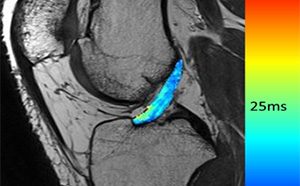CURRENT RESEARCH PRIORITIES
1. Investigate the developmental biopsychosocial processes that positively or negatively influence a female’s physical and mental health and well-being across the lifespan
Examples Include:
- Understand the impact of pubertal onset and timing on mental health (e.g., self-regulation, depression, anxiety, substance use) in adolescent girls.
- Understand the impact of pubertal onset and timing on physical health in adolescent girls (e.g., injury, cardiovascular disease, metabolic syndrome, obesity, diabetes).
- Understand the biopsychological mechanisms that influence eating behaviors.
- Identify the early psychosocial processes that predict health behaviors (e.g., physical activity, substance use, diet, sleep) in adolescent girls.
2. Apply research findings to evidence-based practices that inform healthy-active living, and meaningful changes in the health and wellness of girls and women
Examples Include:
- Engage community partners and conduct needs assessment and pilot studies to understand the barriers and facilitators across multiple levels of influence for women to participate in physical activity (e.g., motivation, family dynamics, peer support, built environment, work conditions, socioeconomic position).
- Identify the systemic social inequities that limit access and opportunity for women and girls to engage in healthy active lifestyles and well-being.
- Develop evidence-based interventions to promote healthy active lifestyles, particularly for those who have been historically oppressed and lack access or opportunity.
- Examine how sex-specific risk factors develop in young females to determine the best entry points (targets and timing) for mitigating physical and mental health risk.
3. Understand the sex-dependent factors (e.g., hormones, anatomy) that increase a female’s susceptibility for sport related issues (injury, menstrual cycle disturbances, female athletic triad, relative energy deficiency), and develop evidence-based screening and intervention strategies to mitigate risk
Examples Include:
- Develop validated tools to reliably document menstrual cycle disturbances and better screen active females for signs and symptoms of female athlete triad.
- Understand associations between menstrual cycle hormones, physical activity, athlete health and sport-related injury (e.g., repetitive head trauma, knee injury).
- Examine sex-differences in physical characteristics (risk factors) as they emerge during growth and development (when injury risk is rapidly rising in females) to determine the best entry points (targets and timing) for mitigating this risk.
- Develop and validate novel injury prevention programs to increase a female’s resiliency to acute and chronic sport-related injuries.
CURRENT RESEARCH INITIATIVES
ACL Injury Risk and Prevention in the Female Athlete

This research agenda seeks to understand the developmental factors that increase a female’s susceptibility for ACL injury so that we can develop timely and effective screening and intervention strategies to mitigate risk and preserve joint health.
Multi-level Predictors of Physical Activity Among Girls and Women
Our aim is to understand how the features of one’s environment drives physical activity in adolescent girls and Latina women.